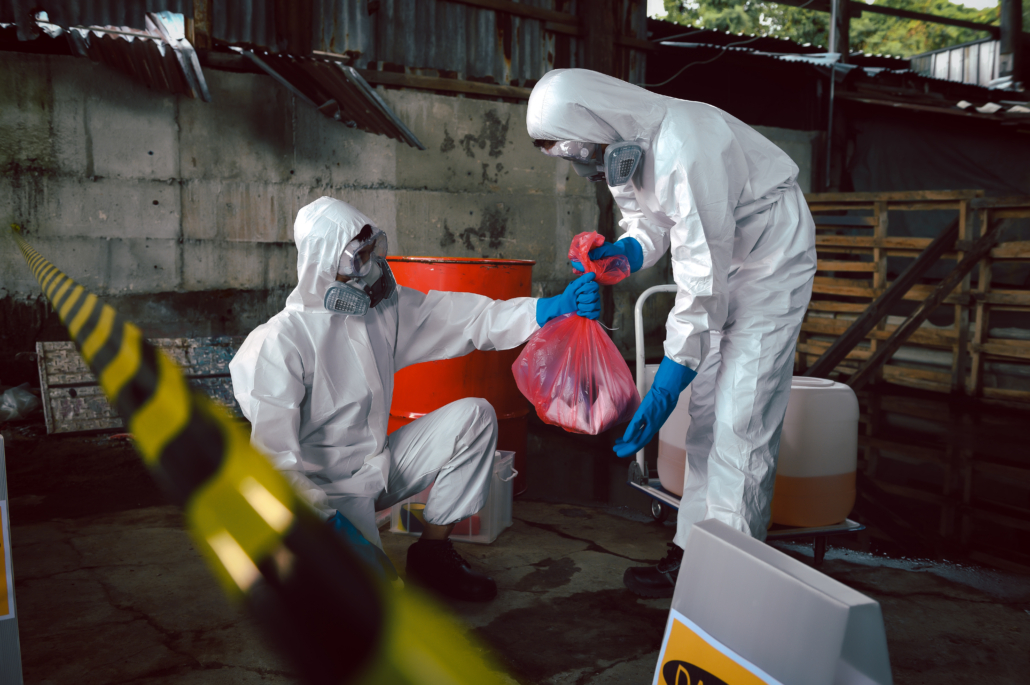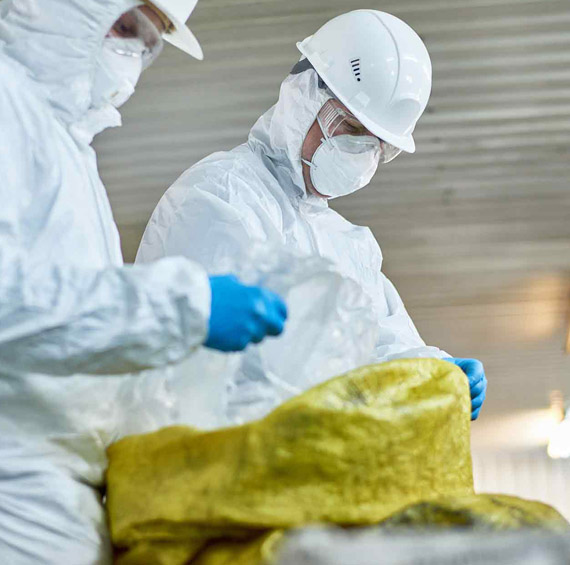Biohazard Removal: Safe Handling and Disposal of Hazardous Materials
Biohazard Removal: Safe Handling and Disposal of Hazardous Materials
Blog Article
Professional Biohazard Cleansing and Decontamination for Blood, Bodily Fluids, and Hazardous Products
The potential health threats associated with exposure to biohazards emphasize the essential requirement for thorough handling and extensive clean-up. As we browse the detailed landscape of biohazard cleanup, recognizing the subtleties of laws, conformity, and the specific equipment at play ends up being vital in making sure a risk-free and extensive purification procedure.
Health And Wellness Threats of Biohazard Direct Exposure
Direct exposure to biohazards positions significant wellness risks that can result in severe consequences for communities and people alike. Biohazards incorporate a vast array of organic compounds, including blood, physical fluids, mold and mildew, germs, viruses, and other potentially contagious materials. When people enter contact with these biohazards, whether via mishaps, incorrect handling, or ecological direct exposure, they face the threat of having major ailments or conditions.
Among the main health dangers associated with biohazard direct exposure is the transmission of contagious diseases. Bloodborne virus such as HIV, hepatitis B and C, and different germs can be existing in biohazardous materials, posing a straight danger to human health. Inhaling airborne biohazards like mold spores or coming right into call with polluted surface areas can likewise lead to respiratory issues, allergies, and various other adverse wellness results.
Moreover, biohazard exposure can have long-lasting health and wellness effects, with some conditions showing up years after the initial call (Blood Cleanup). Consequently, it is critical to prioritize correct biohazard cleansing and purification to alleviate these wellness risks and ensure the safety and security of people and communities

Specialized Educating for Biohazard Clean-up
When it pertains to handling biohazard cleaning efficiently and safely, specialized training plays a fundamental role in making certain appropriate decontamination procedures are adhered to. Biohazard cleanup needs details expertise and skills to effectively mitigate dangers connected with bloodborne pathogens, physical liquids, and unsafe products. Experts educated in biohazard cleanup undergo rigorous instruction on how to safely take care of, eliminate, and throw away biohazardous materials to protect against contamination and direct exposure.
Specialized training for biohazard cleaning covers a variety of essential subjects, consisting of correct individual safety equipment (PPE) use, bloodborne virus understanding, purification methods, and contaminated materials disposal methods. Individuals learnt biohazard clean-up are outfitted with the needed competence to analyze contamination levels, recognize prospective dangers, and implement suitable clean-up procedures in compliance with regulatory criteria.
Constant training and education and learning are extremely important in the field of biohazard clean-up to remain upgraded on the most up to date purification innovations, safety procedures, and policies. By purchasing specialized training, biohazard cleaning professionals can efficiently react to emergency clean-up circumstances and secure both public health and the setting.
Value of Appropriate Decontamination Methods
Using appropriate purification strategies is vital in biohazard cleanup to properly lessen and remove hazardous products wellness dangers. Efficient purification not only makes sure the elimination of visible traces of blood, bodily liquids, and other biohazards but likewise targets unnoticeable pathogens that might pose major wellness risks if not appropriately gotten rid of. By following stringent decontamination methods, educated experts can substantially reduce the risk of exposure to unsafe bacteria, viruses, and bacteria that could result in conditions or infections.
Correct decontamination methods involve using customized devices and disinfectants that are specifically created to reduce the effects of biohazards effectively. Detailed cleaning and sanitation of contaminated areas are necessary to prevent the spread of pathogens and guarantee a safe atmosphere for passengers. In addition, the right disposal of biohazardous waste complying with purification treatments is important in preventing contamination of other surfaces or people.

Equipment and Devices for Safe Cleaning
When dealing with blood, bodily fluids, or hazardous products, biohazard cleaning experts depend on specialized equipment to decrease exposure risks and extensively sanitize the afflicted area. In addition, biohazard cleansing kits consisting of anti-bacterials, absorbing materials, and biohazard bags are utilized to securely get rid of and consist of of contaminated items.
Advanced cleansing devices like hospital-grade disinfectants, HEPA-filtered vacuum cleaners, and misting equipments are employed to sterilize surface areas and eliminate biohazards effectively. Specialized equipment such as sharps containers and biohazard garbage disposal containers are go to website utilized to securely handle sharp objects and biohazardous waste products. By utilizing the best tools and devices, biohazard cleaning specialists can make sure a complete cleanup procedure that focuses on security and reduces health and wellness risks for both workers and residents of the affected area.
Rules and Compliance in Biohazard Cleaning
Correct adherence to regulations and conformity requirements is critical in biohazard cleansing to guarantee the safety and security of both employees and the environment. Government companies such as OSHA (Occupational Safety and Health And Wellness Administration) and the EPA (Environmental Defense Company) have developed details guidelines for biohazard cleaning treatments to reduce health risks and ecological contamination. These guidelines cover a range of elements including the handling, transportation, and disposal of biohazardous products, in addition to the essential training and safety devices needed for personnel involved in the cleanup process.
Biohazard cleansing firms have to stay current with these policies to guarantee that their operations meet the needed safety standards. Failure to follow these guidelines can lead to extreme effects, including penalties, lawful action, and threatening the wellness of individuals and the setting. By complying with stringent regulations and conformity measures, biohazard cleansing firms can properly mitigate risks and guarantee a safe and complete cleaning process for all events entailed.
Conclusion
To conclude, biohazard cleansing and purification need specialized training, proper strategies, and adherence to policies. Exposure to blood, physical fluids, and harmful materials poses significant wellness threats, making it crucial to utilize the appropriate tools and tools for secure cleanup. By adhering to stringent methods and guidelines, experts can successfully reduce the dangers related to biohazard direct exposure and make sure the security of both themselves and others.
As we browse the Your Domain Name elaborate landscape of biohazard cleaning, comprehending the nuances of regulations, conformity, and the specific devices at play comes to be imperative in making certain a risk-free and detailed purification procedure. (Blood Cleanup)
When it comes blood cleanup to taking care of biohazard cleanup efficiently and securely, specialized training plays a basic duty in making sure correct purification treatments are adhered to.Utilizing appropriate decontamination techniques is crucial in biohazard cleaning to efficiently minimize and eliminate harmful products wellness threats. Furthermore, biohazard cleaning packages including anti-bacterials, absorbent materials, and biohazard bags are utilized to securely have and dispose of contaminated products.
Federal government firms such as OSHA (Occupational Safety and Health Management) and the EPA (Environmental Security Agency) have established particular standards for biohazard cleanup procedures to minimize health and wellness dangers and ecological contamination.
Report this page